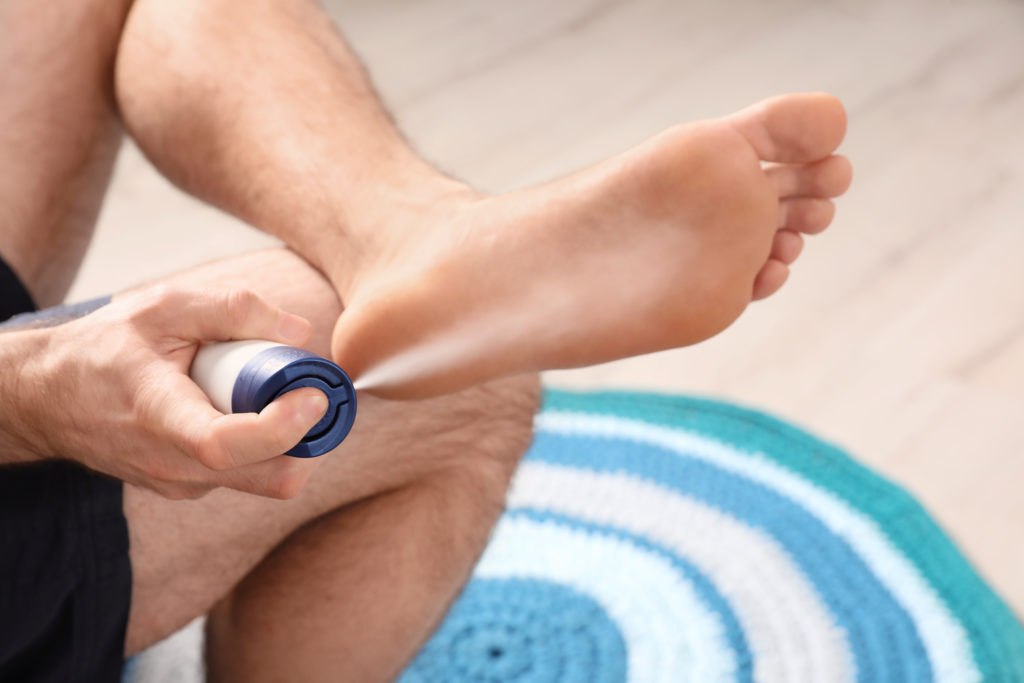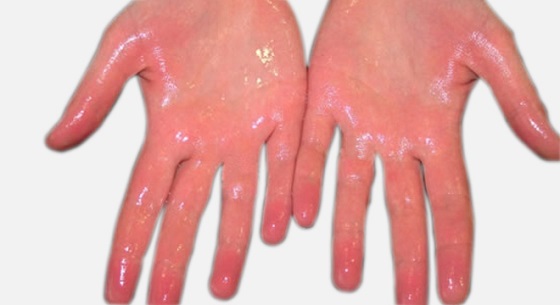How to Stop Sweaty Hands and Feet: Top Dermatology Treatments for Excessive Sweating
How to Stop Sweaty Hands and Feet: Top Dermatology Treatments for Excessive Sweating
Blog Article
Introducing the Complexities of Excessive Sweating: A Comprehensive Overview to Diagnosis and Monitoring
Too much sweating, medically referred to as hyperhidrosis, is a problem that affects a substantial number of individuals and can have an extensive influence on their lifestyle. While sweating is a natural physical function, its overactivity in hyperhidrosis offers an one-of-a-kind set of difficulties that commonly go beyond plain discomfort. Comprehending the underlying causes, acknowledging the signs and symptoms, and browsing the diagnostic process for hyperhidrosis can be intricate jobs. In this extensive overview, we will explore the complexities of hyperhidrosis, from its medical diagnosis to the variety of therapy alternatives available, dropping light on effective monitoring methods for those facing this problem.

Understanding Hyperhidrosis Causes
Hyperhidrosis triggers can be credited to numerous aspects such as genetics, hormonal inequalities, and specific medical problems. Genes play a significant duty in key focal hyperhidrosis, where individuals inherit the problem from their household members. This kind of hyperhidrosis often manifests in certain locations like the palms, soles of the feet, underarms, and face. Hormonal discrepancies, particularly an over active thyroid gland or menopausal modifications, can likewise trigger too much sweating. Furthermore, particular medical conditions such as diabetes, cardiovascular disease, and infections can result in additional generalised hyperhidrosis. These underlying health and wellness concerns can disrupt the body's all-natural air conditioning system, creating the gland to come to be overactive. Recognizing the origin of hyperhidrosis is crucial in diagnosing and effectively handling this problem. By determining the particular factors adding to extreme sweating, doctor can customize therapy plans to resolve the underlying reason, providing relief and improving the lifestyle for individuals influenced by hyperhidrosis.
Identifying Hyperhidrosis Symptoms
:max_bytes(150000):strip_icc()/sweaty-palms-palmar-hyperhidrosis-4691320-10512b2d428846059753b76df6dc74c2.png)
In addition, hyperhidrosis signs and symptoms might materialize in social and psychological distress, as individuals might really feel ashamed or nervous about their sweating, bring about avoidance of social scenarios (How to stop sweaty hands). Furthermore, repeated episodes of extreme sweating can result in skin maceration, fungal infections, and a general decline in self-worth
Diagnostic Refine for Hyperhidrosis
Starting the analysis procedure for excessive sweating involves comprehensive examination of the individual's medical history and physical exam. Asking regarding the beginning, duration, and sets off of sweating episodes is crucial to separate between main focal hyperhidrosis and additional generalised hyperhidrosis. Case history ought to also include questions about medicines, clinical conditions, and family history of hyperhidrosis.
Throughout the checkup, particular attention is paid to the locations affected by sweating. The doctor may assess the degree of sweating, check for signs of underlying conditions, and review the effect of sweating on the individual's lifestyle. Additionally, certain examinations like the gravimetric examination, starch-iodine examination, or skin conductance measurements may be conducted to read the full info here evaluate the amount of sweat created.
Furthermore, in situations where secondary hyperhidrosis is presumed, extra tests such as blood tests, pee tests, and imaging researches may be advised to identify the underlying root cause of excessive sweating. The diagnostic process intends to properly identify the type and reason for hyperhidrosis to lead suitable monitoring strategies.
Treatment Choices for Hyperhidrosis
When addressing too much sweating, different treatment choices are available to minimize signs and symptoms and boost the person's high quality of life. The therapy approach for hyperhidrosis depends upon the seriousness of symptoms and the person's feedback to first therapies.
Topical treatments, such as aluminum-based antiperspirants, are frequently recommended as the initial line of protection for taking care of mild instances of hyperhidrosis. These items work by connecting the sweat air ducts, hence minimizing the amount of sweat that gets to the skin's surface. For individuals with extra severe signs and symptoms, oral drugs like anticholinergics may be prescribed to help decrease sweating. Nonetheless, these medicines can have side results and are not ideal for everybody.

Effective Monitoring Methods
To properly handle hyperhidrosis, a personalized and thorough treatment strategy tailored to the individual's details needs and action to previous treatments is crucial. This strategy might integrate a mix of therapeutic techniques, including way of life alterations, topical therapies, dental medicines, botulinum toxin shots, iontophoresis, and in serious cases, surgical treatments like sweat gland elimination or sympathectomy. Way of life adjustments such as putting on moisture-wicking apparel, utilizing antiperspirants, and exercising stress-reducing methods can match clinical interventions. Topical antiperspirants having aluminum chloride are frequently the first-line therapy, with stronger solutions available for immune cases. Dental medications like anticholinergics might be suggested for generalized hyperhidrosis. Botulinum toxin injections are effective for focal hyperhidrosis, providing short-term relief by obstructing the release of acetylcholine. Iontophoresis, including making use of best site a low electrical present to decrease gland activity, can be advantageous for both palmoplantar and axillary hyperhidrosis. Surgical options are usually reserved Check Out Your URL for severe, refractory cases and need cautious factor to consider of risks and advantages. A multidisciplinary approach including skin doctors, health care physicians, and, if required, cosmetic surgeons, can maximize the administration of hyperhidrosis.
Verdict
In final thought, hyperhidrosis is a condition defined by extreme sweating, which can considerably influence an individual's quality of life. With appropriate diagnosis and monitoring methods, individuals experiencing from hyperhidrosis can locate relief and enhance their overall health.
Excessive sweating, medically understood as hyperhidrosis, is a condition that influences a significant number of people and can have a profound effect on their high quality of life. By identifying the particular factors adding to too much sweating, healthcare carriers can customize therapy plans to deal with the underlying cause, supplying alleviation and enhancing the quality of life for people affected by hyperhidrosis.
Hyperhidrosis, defined by excessive sweating past what is necessary for managing body temperature, can significantly impact a person's high quality of life. Making inquiries concerning the start, duration, and triggers of sweating episodes is important to distinguish in between key focal hyperhidrosis and secondary generalised hyperhidrosis. Exessive Sweating.In verdict, hyperhidrosis is a problem defined by extreme sweating, which can greatly affect a person's high quality of life
Report this page